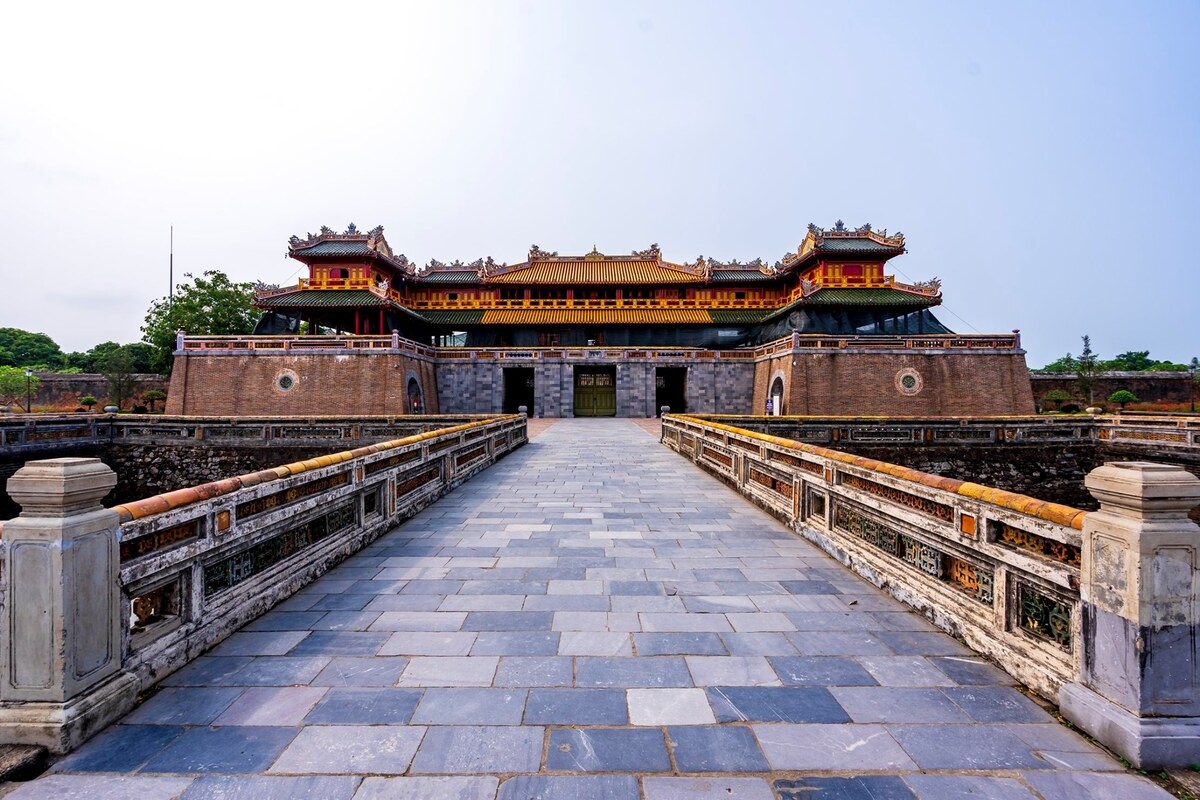Hue to expand scope to restore heritage sites and reinforce development
 |
| The Citadel is a central heritage of Hue city |
Phan Thien Dinh, Secretary of Hue City Party Committee, said that the adjustment of the administrative boundaries of Hue will turn the city into a unique heritage city. The central task is to retain the cultural and heritage values of the city, as stressed by the Politburo's Resolution No.54-NQ/TW dated December 2019 on building Thua Thien-Hue to 2030, with a vision toward 2045.
“The expansion will provide ample area for Hue city to develop industries, especially high-tech agriculture, to convert plant varieties and foster the economic strengths of each region. Our marine resources will also help Hue to promote tourism and establish new industries that could create jobs. Besides, doubling the population would help turn the city into a regional trading hub," said Dinh.
| Now, urban areas expansion will unfold a new development axis from West to East, bringing the sea closer to Hue city, helping to change the face of the city, not only as a traditional ancient capital but also as a coastal city. |
While among Vietnamese cities, the political and administrative capital is Hanoi, while the economic powerhouse is Ho Chi Minh City, none of them captures Vietnam's cultural identity as well as Hue. Once the ancient capital, Hue's vista is richer in traditional Vietnamese architectural elements than any other city.
According to researcher Nguyen Xuan Hoa, former director of Thua Thien-Hue Department of Culture and Information, for a long time, Hue city has been developing from the north to the south, along the axis of the National Highway 1A. He added that it would be wise to make bold investments in opening a new east-west development axis connecting Hue, Thuan An, and traffic routes along the coast and lagoons. This would link Hue's heritage city with other vibrant towns and districts to drive development.
"The newly-established Thuan An ward will be the nucleus for the development of the whole region. Along the coast, this is an ideal place for resort and coastal cities," he said.
On March 19, Thua Thien-Hue People's Committee issued Decision No.596/QD-UBND approving the detailed planning on both sides of the Huong River. Accordingly, the planning includes the area along the river, from Vong Canh hill to Bao Vinh ancient town, spanning over 15 km. The planning area is about 855.08ha, of which the water surface area is 503.84ha.
Lying on both sides of the river is an advantage of Hue city and Thua Thien-Hue province, and is an important factor in Hue's urban structure to develop heritage and ecological urban areas.
This area provides a diverse and rich natural landscape with many historical and cultural sites, park areas in the city centre, and riverside landscape areas. These include the scenic Vong Canh hill, Da Vien Dune, and relics belonging to the Hue heritage complex such as Hon Chen Palace, Thien Mu Pagoda, Van Thanh, Vo Thanh, Phu Van Lau relics to the Gia Hoi and Bao Vinh ancient towns.
In addition, the urban area north of Huong River is dense with historical and cultural relics such as Phu De, garden houses, Bao Vinh ancient town, Gia Hoi, Chi Lang, and Dinh market, which will need to be conserved and restored to spur local tourism development.
What the stars mean:
★ Poor ★ ★ Promising ★★★ Good ★★★★ Very good ★★★★★ Exceptional
 Tag:
Tag:
Related Contents
Latest News
More News
- Opening remarks of 14th National Party Congress (January 20, 2026 | 09:44)
- Vietnamese youth support 14th Party Congress with nationwide flag raising (January 20, 2026 | 09:37)
- Deputy Foreign Minister meets int’l journalists covering 14th National Party Congress (January 20, 2026 | 09:19)
- 14th National Party Congress convenes preparatory session in Hanoi (January 20, 2026 | 09:12)
- 14th National Party Congress opens preparatory session in Hanoi (January 19, 2026 | 17:42)
- National Convention Centre ready for 14th Party Congress (January 19, 2026 | 12:05)
- Key highlights of 14th National Party Congress (January 19, 2026 | 09:00)
- First working day of 14th National Congress of Communist Party of Vietnam (January 19, 2026 | 08:54)
- 14th National Party Congress – significant moment for Vietnamese people, international friends (January 18, 2026 | 18:00)
- 14th National Party Congress expected to shape Vietnam’s path to 2045 (January 17, 2026 | 16:00)





























 Mobile Version
Mobile Version